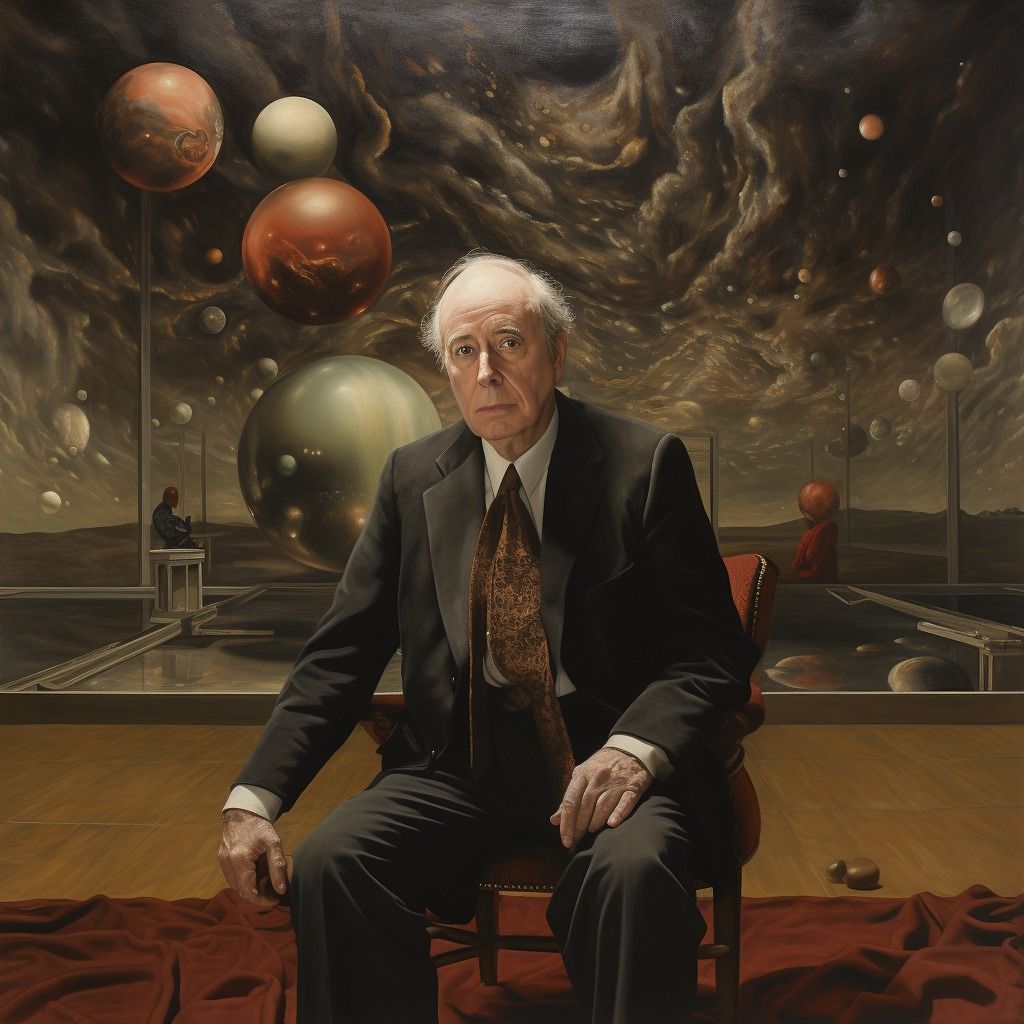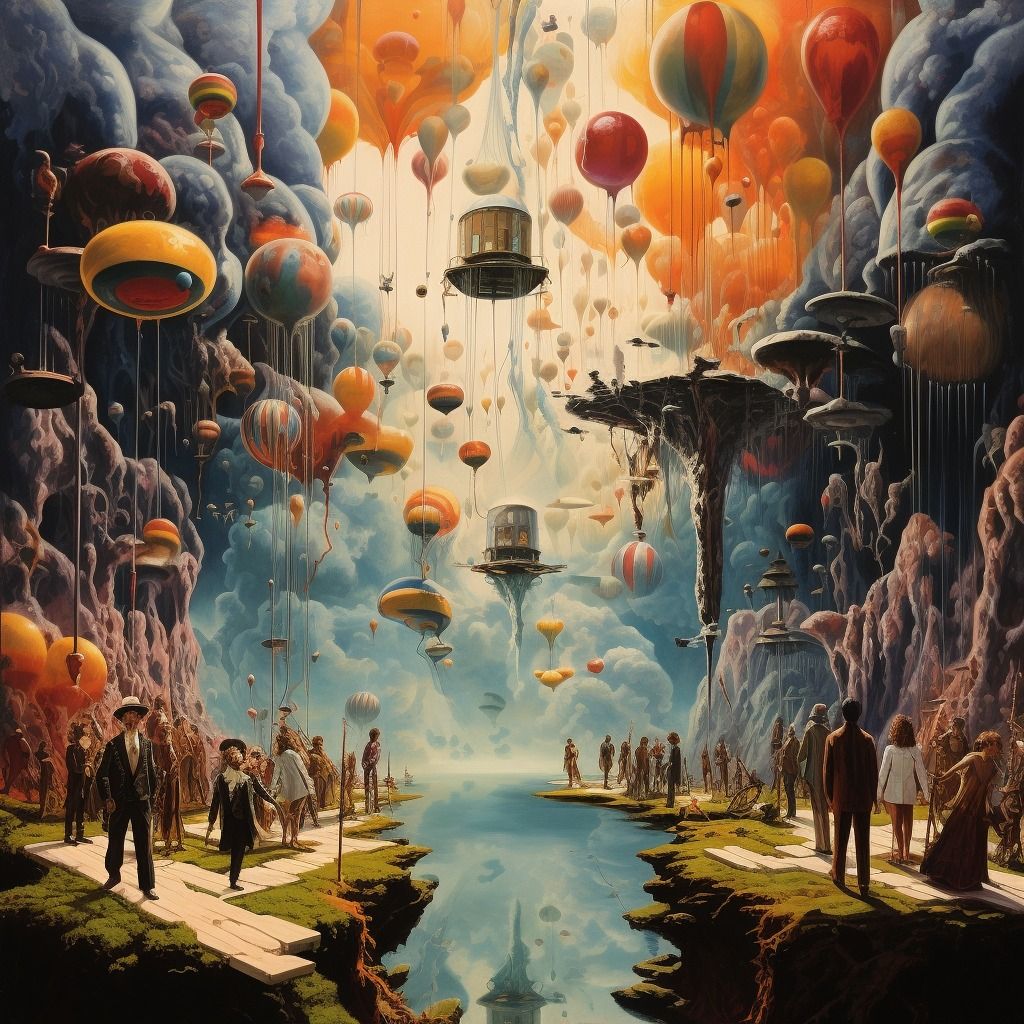Ballard: four novels Under the sign of the Apocalypse
The apocalyptic scenario is one that many of James G. Ballard's characters have to face. Ballard is a science fiction writer and noble father of speculative cyberpunk. His stories unfold under the sign of the Apocalypse, the Revelation of a new dystopic world.

The apocalyptic scenario is one that many of James G. Ballard's characters have to face. Ballard (Shangai 1930- London 2009) is a science fiction writer and noble father of speculative cyberpunk. His stories unfold under the sign of the Apocalypse, the Revelation of a new dystopic world.
The four catastrophes
Here is his tetralogy of catastrophes: The Wind from Where (1961), The Drowned World (1962), The Burning World (1964), and The Crystal World (1966). In these novels, Balllard hypothesizes that four different atmospheric events are the cause of a total change in the Earth's climate:
- a destructive wind;
- solar storms capable of liquefying glaciers and submerging cities;
- the disappearance of rain;
- the crystallization of the world.
Air, Water, Fire and Earth: The four primary elements. While each book stands on its own, collectively, they offer a fascinating exploration of Ballard's dystopian vision of the world.
The Wind from Nowhere
In the novel The Wind from Nowhere, the story begins at the London airport, where Donald Maitland is waiting for a Pan American flight to Montreal. However, no planes can take off because of wind, caused by a cosmic radiation stream that is sweeping the surface of the Earth from east to west. Tokyo, Rome, New York, and every other major city in the world, have already been destroyed. Those who survived try to escape underground. All except Hardoon, a wealthy tycoon, who tries to defy the power of the cosmic wind. He quickly builds a huge glass pyramid, from which he watches and listens to the progress of the enemy, the wind. Eventually, the pyramid recovers and the wind dies down. Perhaps Hardoon's resistance was successful, perhaps not.
The Drowned World
Set in a post-apocalyptic future where global warming has caused sea levels to rise, submerging cities and creating a tropical environment, the novel The Drowned World tells how the rising temperatures can cause glaciers and polar ice caps to melt, causing planetary water levels to rise. Debris carried by the waters redraws the world's boundaries:
The immense thawing channels had carried with them billions and billions of tons of sediment. Huge deltas had foprmed at their outlets, abstaining continental coastlines and creating dikes around the oceans, shrinking them.
Only the tops of skyscrapers will rise out of the water like islands of survivors. The world has become one giant Venice. As the pumps built to drain the water begin to operate, bringing the submerged cities back into view, Beatrice, the female protagonist, tells Robert Kerans, the male protagonist, that she wants to return to the lagoon, to the underwater world, because of the squalor of the cities where men once lived. The underwater world is a womb, Dr. Kerans says, but once left alone, he looses himself in the hellish paradise of the New World, like a second Adam lost in a post-creation where he does not belong.

The Burning World
In The Burning World, the novel's protagonist, Dr. Charles Ramson, is struck by the 'vengeance of the sea'. The lack of rain is causing a drought that is drying up the planet. The cause is not in the sky, as experts initially speculate, but in the oceans:
It had been discovered that on the surface of the waters of all the world's oceans, at a distance of about one thousand five hundred miles from the coast, stretched a thin but elastic monomolecular film formed by a complex of long-chain polymers. The film was the result of the extraordinary amount of industrial waste dumped into the oceans.
As always, in Ballard characters' outer and inner worlds coincide, generating a double Apocalypse.
The Crystal World
The Crystal World Ballard introduces a bizarre phenomenon where everything in a particular region of Africa begins to crystallize and become inert. As the crystallization spreads, it threatens to engulf the world in a frozen state. The protagonist, Edward Sanders, an English physician, arrives in the afflicted area to discover his lover, who has succumbed to the crystallization process.
Transfiguration of the world
As the boundary of the crystal world approaches, Sanders encounters a cast of surreal characters who seem to be drawn to the phenomenon. The novel delves into themes of time, stasis, and the human fascination with entropy and decay.
It is the last novel of the Apocalyptic Tetralogy. Among other things, it is also the closest to the apocalyptic atmosphere typical of the Holy Scriptures. Everything is transfigured, illuminated. Everything merges, definitively, with the final union of space and time. The process is impeccably narrated.
'Life, like a dome of colored glass, stains the white radiance of eternity'. To become eternal, time must die and join forever the 'new' space, a crystal world neither dead nor alive, but in the stasis of silence.
Ballard's style of science fiction writing
Overall, Ballard's tetralogy offers a provocative examination of human nature, exploring how extreme environmental changes can shape individual behavior and collective consciousness. Ballard describes an alternate reality through irrational processes such as spontaneous associations and surreal interpretations of life. But his technique is also 'part of the paraphernalia of advertising and film, not to mention science fiction, to represent popular archetypes of dreams and the unconscious.'
Then, as they mounted one of the dunes, they saw the tall solitary figure of Jonas a hundred yards away, moving slowly among the ruins by the edge of the drained lake. His dark face raised to the sunlight, he walked with the same entranced motion, declaiming at the white bone-like dust that reached across the lake to the horizon. His voice droned on, part prophecy, part lamentation, and twice Ransom caught the word "sea." His arms rose at each crescendo, then fell again as he disappeared from sight.

Ballard's cyberpunk themes
Ballard's narrative remains deeply rooted in the social reality of urban spaces, be they the intricate labyrinths of highway interchanges in contemporary cosmopolitan cities or the degraded suburbs of semi-urbanized suburbs. The paradigm of paranoia in Ballard's more recent texts shifts to reflect the growing obsession, since the 1990s, with the development of increasingly sophisticated and repressive systems, including the demarcation of clear boundaries and insurmountable barriers to contain the phenomenon of armed aggression.
After the early apocalyptic novels, Ballard is left with an obsession with the Inner Space, that is, the investigation of the human psyche and man's reactions in the face of the dominance of technolgy and the transformations of technological globalization. The apocalyptic vision is drawn around a new revelation: Insanity is in danger of becoming the only form of freedom in a hyper-controlled world dominated by mass consumerism.
Bibliography
- The Drowned World by J.G. Ballard, Liveright Publishing Corporation, May 2013.
- The Crystal World by J.G. Ballard, Farrar, Strauss & Giroux-3pl, May 1988.
- The Wind from Nowhere by J.G. Ballard, Berkeley, January 1962.
- The Burning World by J.G. Ballard, 1964.
- Miracles of Life: Shanghai to Shepperton: An Autobiography (2008) - James Ballard's autobiography, detailing his childhood in Shanghai, experiences during World War II, and his writing career.
- Running Wild (1988) - A collection of interviews, essays, and reviews that provide insights into Ballard's views on literature, society, and culture.
- A User's Guide to the Millennium: Essays and Reviews (1996) - A collection of Ballard's essays and book reviews on various topics, including literature, art, and contemporary issues.
- Extreme Metaphors: Selected Interviews with J.G. Ballard (2012) - A comprehensive collection of interviews spanning Ballard's career, offering insights into his ideas and creative process.
- Apocalypse Now. Le lucide profezie di James G. Ballard by Alberto Cassani.
- From the preface Vetri incrinati: la narrativa di J. G. Ballard, by Paolo Simonetti.
